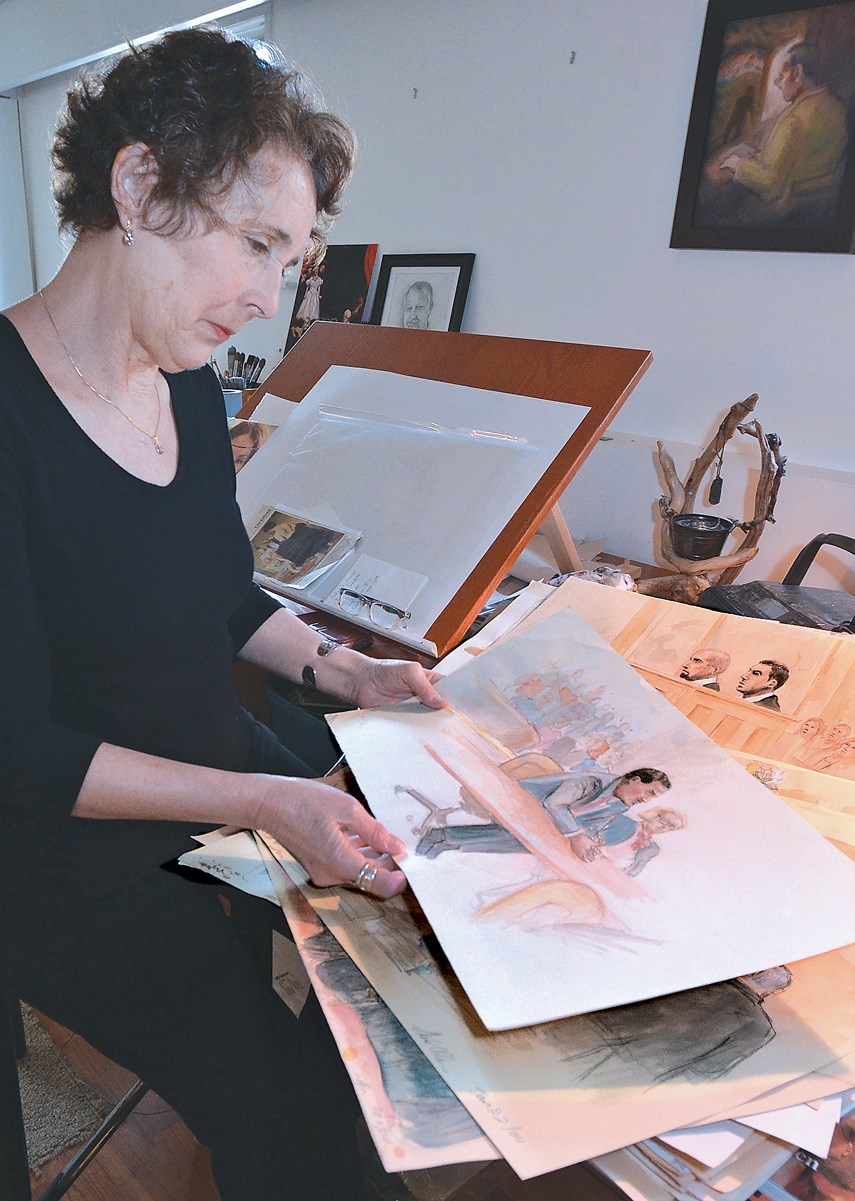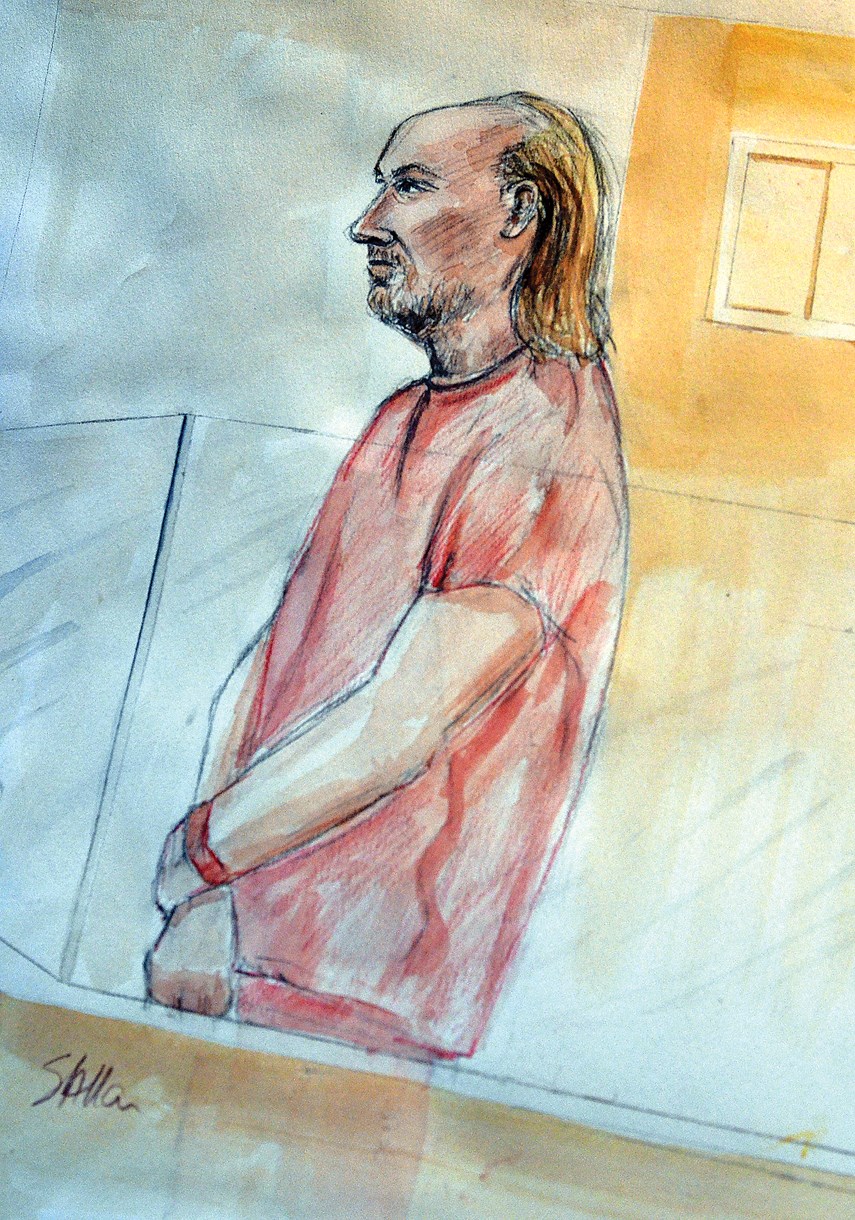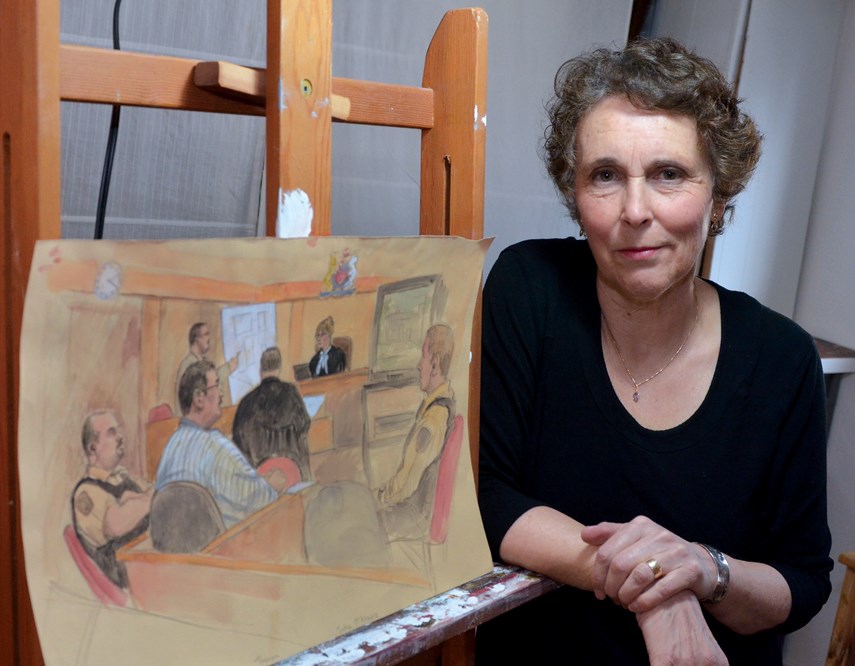Sheila Allan has drawn all manner of people, though the setting’s often been the same.
For those who have found themselves sitting in a B.C. courtroom any time in the last 40-odd years, and if the intrigue of the case has been just right, there’s a good chance that Allan – sketchbook, pencil and watercolours in hand – was there too.
Her work as a courtroom sketch artist has taken her all over the province and, when she’s able to capture the subject in just the right light, into the minds and misdeeds of some B.C.’s most infamous criminals and thrilling cases.
She drew portraitures for the lengthy 1985 Air India bombings case and most recently, she’s sketched Huawei chief financial officer Meng Wanzhou in what’s become an ongoing international dispute.
Almost 20 years ago, she was one of the first people to draw serial killer Robert Pickton at a small Port Coquitlam courthouse.
“I think I was the only artist there at the time. And I did draw him a couple more times at his big trial,” says Allan, a longtime North Vancouver resident. “I’ve definitely been emotional at certain trials because I’ve heard some pretty horrible things. I have gotten emotional. I have gone to the washroom and just teared up a bit.”
Born in Edinburgh, Scotland, Allan and her family immigrated to Canada in the late ’60s, when Allan was 13.
She was a voracious drawer from a much earlier age, however, explaining she was often caught drawing her teachers in elementary school and, at one point, burned wood in the back of her family home on some cement stones in order to make charcoal.
“…because I knew charcoal was good for drawing with,” she explains.
It was her great uncle – uncle Hargrieve, an avid supporter of art in her youth – who imparted the adage that would become Allan’s guiding light going forward. He told her: “Draw what you see.”
“I followed that. I learned how to look,” explains Allan.

When Allan reached working age, she also realized she had to look for a job. She’d already started her formal art education at what was then the Vancouver School of Art, but after stumbling upon a magazine article profiling the life of a courtroom artist, she figured she could ply her trade in a practical way while continuing her studies.
“I just looked at it and thought, ‘Wow, I could do that. This is a skill that I have,’” she says. “For me, there was lots of exciting things about it. … It went from there and I just started practicing.”
At first unsure of the mores of courtroom sketching, Allan would head down to the courts and try to get into an open session and start drawing. She’d draw plaintiffs and defendants, judges and juries, and, sometimes most crucially, family members present in the court gallery.
Eventually, she connected with a local news broadcaster and was hired to sketch for them.
Describing the role of a courtroom sketch artist as a mix between artist and journalist, the job, she says, is to be the eyes of the public who may not be able to sit in.
“My job is to draw people as I’m seeing them,” she says. “It is a visual documentation of what goes on. … For those people that can’t get into court, the artist is the only way that person can see those images.”
She highlights many challenges of the job, including making sure you get a good seat in the courtroom and drawing with speed and accuracy – remember, she says, you never know when the person you’re there to draw will actually show up, and when they do, you never know for how long they’ll be there.
“When I go into court, I have to be fast, I have to draw as fast as I can. Most of the things that I’ve gone to in the last few years are first appearances of people,” she says.

Though depending on the case, sometimes she was in the courtroom a lot, such is in the infamous case of Reena Virk, a teenager who was murdered in 1997 by Warren Glowatski and Kelly Ellard. The trial became a landmark case in Canada and garnered extensive media coverage.
“Warren Glowatski pleaded guilty fairly early on, but Kelly Ellard didn’t, so there were three trials for her and she was finely convicted,” says Allan. “That was one of those opportunities where I really got to go a lot, and I got so many pictures of Reena Virk’s parents and her grandparents – really gripping testimony.”
Things have changed for courtroom sketch artists over the decades as newsroom budgets have diminished and the online and social media realms have supplanted traditional methods of communication. Gone are the days when stations would hire you for the entire duration of a trial and fly you all over the place, she opines.
“Now it’s completely different, we get pictures of people everywhere. That really reduced the amount of courtroom art that was being done,” she says.
Allan doesn’t do sketches for CBC or other print outlets as much as she used to, but she’s returned to her art in many other ways as well. She still loves drawing people, and places, and sketching out what she sees.
That said, she can’t help but laugh at the unique way she was able to get by for so many years.
“It’s very unique and a strange almost antiquarian skill that’s still going on. I always think that’s amazing that that’s my job – because everything else has changed so much.”



